I love a good biography, and I’ve just read two. What I’ve enjoyed most is the way both biographers have taken different, unconventional, creative approaches which move away from simple chronology and facts and, even more interestingly, well away from hagiography.
[Kettle’s Yard]
Although, to be honest, hagiography would have been pretty difficult with the two men whose lives I’ve read, despite the fact that both are now cult figures. Both Jim Ede and Roger Deakin were flawed characters (aren’t we all) and, interestingly, both men only had one outstanding achievement late in their lives. This means there are many years of false starts, roads not taken, dead ends, and muddled mundanity in the run up to Kettle’s Yard and Waterlog.
[the famous lemon on a pewter bowl in Kettle’s Yard]
Laura Freeman tackles this issue by widening her focus and including artists whose work is now in Kettle’s Yard, although I would have liked to know a lot more about his finances (he was known, disappointingly, to be a cadger) and about his wife, Helen Ede, a very shadowy figure.
Patrick Barkham focusses on Roger Deakin’s personality and relationships and writes in the first person, as if it were RD narrating his life. The diary style is broken up by a large number of ‘witness statements’ taken from interviews with people who knew him or were friends. And my goodness, there are no holds barred. As with John Lennon, you could say he was a ‘complex’ man, but that clearly wouldn’t be the half of it. (Just read what his editor on Waterlog had to say about him.)
[Kettle’s Yard: ‘the Louvre of the pebble’]
I was fascinated by their approaches to domesticity. Jim Ede, of course, is revered for the way he arranged his collections in Kettle’s Yard, but Helen complained that there was nowhere she could put her knitting down. Roger Deakin’s set-up was almost a ‘rural slum’ as one friend said, and he was happy to share his ancient house with all sorts of creatures, but wouldn’t tolerate a ketchup bottle on the table. Both men were clearly not just dominant but domineering domestic forces. I’m all for creative expression in the home, it’s what I do and write about. However, when it turns edgy and controlling, I’d rather not live with a ‘genius’.
But then I grew up without a man about the house. My Mum was widowed at the age of thirty-four and left with with four children, seven (me), six, and soon-to-be-born twins to support on her own. Her mother was widowed in her early thirties with two children, aged four and two. She didn’t know her father, either, because she was illegitimate, the result of a liaison between the playboy son of a Manchester cotton mill owner and a housemaid. He was a serial offender; his mother (whose surname my grandmother was given) established an ‘orphanage’ in the grounds of the hall to house these children and paid for their education (the story has all the makings of a Sunday night drama series*). In addition, I grew up on a very small road (just twenty-three houses) where there were three young widows and ten children without a father. And now both my sisters-in-law, the wives of my two younger brothers, are widows. Blimey, that’s a lot of widows and a lot of fatherless children.
As a result, I have no idea what it’s like to have a father. And until I moved in with Simon, no idea what it was like to have a man about the house. Yet I would not have wanted a Jim Ede, despite his obvious brilliance at creating beautiful domestic settings and God help you if you wanted to change anything. Nor would I have liked a Roger Deakin, not even with his love of outdoor swimming, because I’m not keen on sharing my house with someone who is more likely to hit me with a mug or frying pan than to make me a cup of tea or fry me an egg (partners’ testimonies in the biography).
But I’ve been lucky, inordinately lucky, and I found my ideal man about the house. Funnily enough, Simon was the more domestic of the two of us when we met. When I moved to live with him, I started working for Arthur Sanderson & Sons and it never crossed my mind to use my staff discount on some brilliant floral furnishing fabric, let alone buy one of the display sofas which were regularly sold at knock-down prices, until Simon said it might be a good idea.
He is adventurous in his home tastes, tidier than me, takes genuine delight in colour and pattern, and is great with the hoover. Years ago, when we moved into a new house and a workman asked to use the hoover to clear up, I had to phone Simon at work to ask where he kept it.
He retired a while ago, but soon unretired, took a job in Peterborough which enabled us to move to Cambridge, retired again, and is now happily mostly not working (he keeps his hand in from time to time). I’d been working from home for over thirty years, so there could have have been some Jim Ede/Roger Deakin clashes - except he’s the one who actually makes nice arrangements and eats tomato ketchup. But in fact it’s lovely with him here. Lockdowns actually cemented the enjoyment of sharing our daily lives, saxophone and all; he spent every afternoon in the time of Covid teaching himself to play, and a recording of one of his wobbly tunes would be one of my Desert Island Discs.
Since then he’s discovered wood-turning, and now has a lathe in the garage. He only started in January and, although he is a champion asparagus-grower and tulip-bulb-planter, he’d never practiced a craft before, and already every surface is covered in beautiful bowls made from walnut, cherry, oak, ash, beech, London plane, iroko, sycamore. Discussions of craft and creativity have multiplied exponentially - as have lemons in our own bowls. My sort of man about the house.
Happy Sunday!
*he has a Wikipedia page, but I’m keeping that for the film treatment



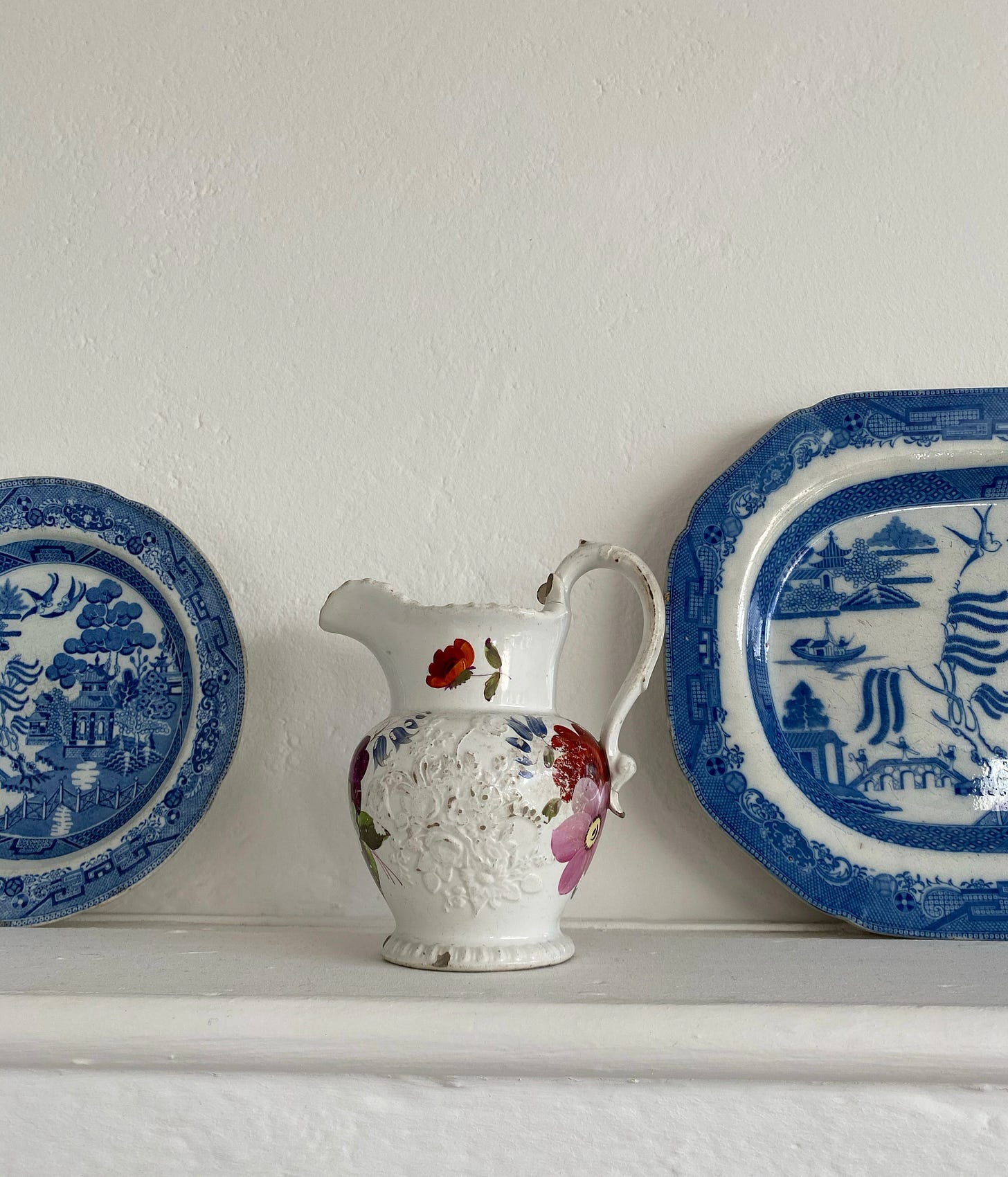
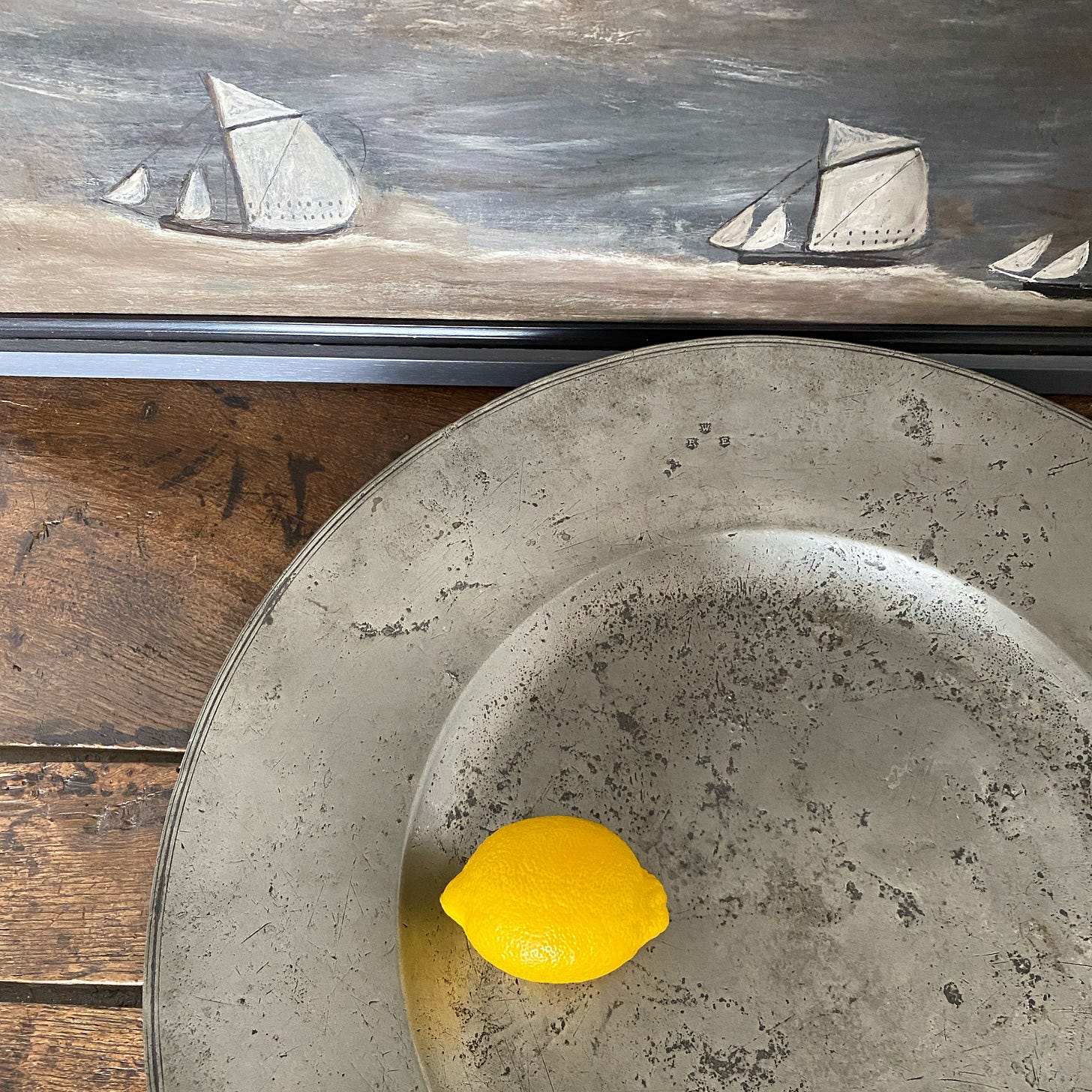
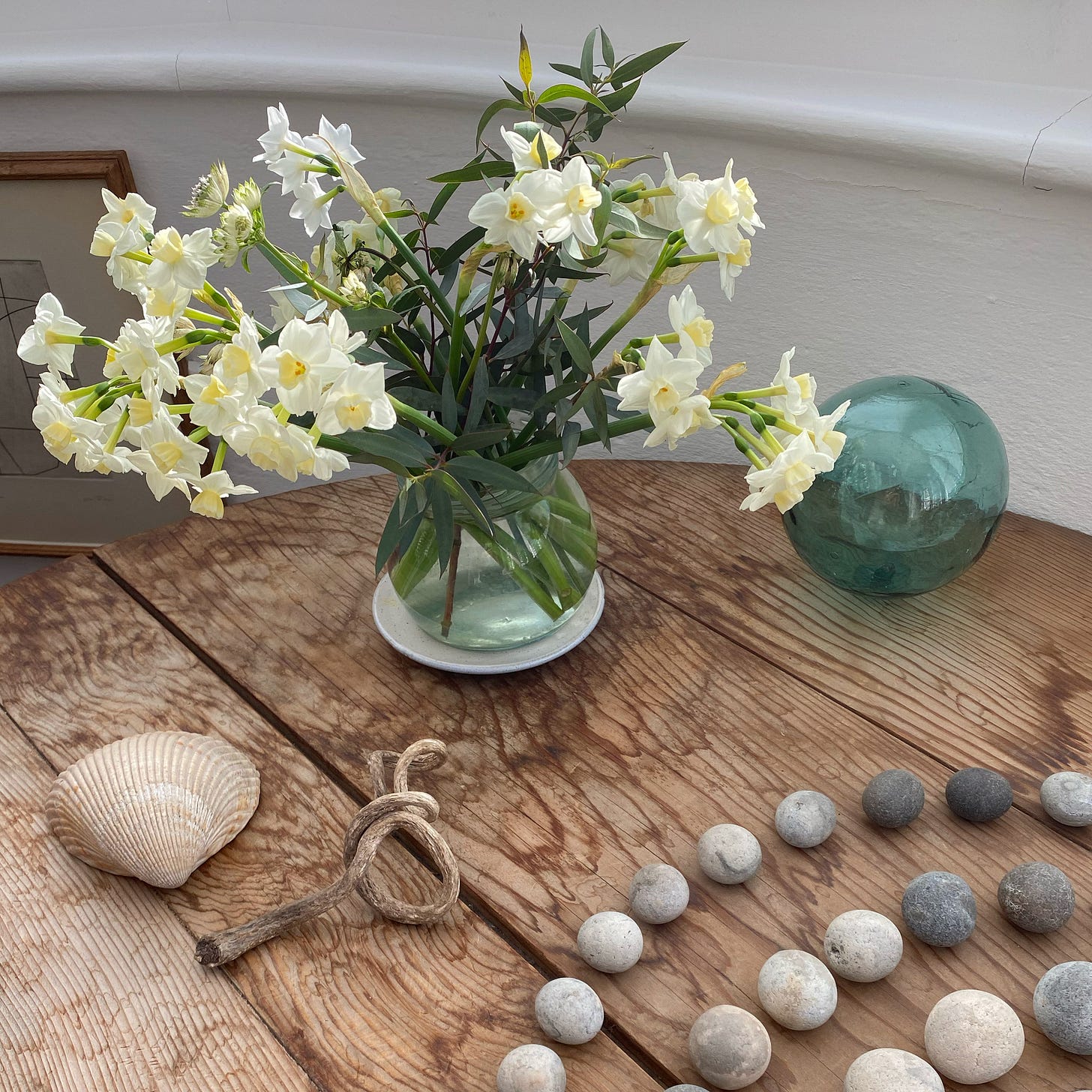
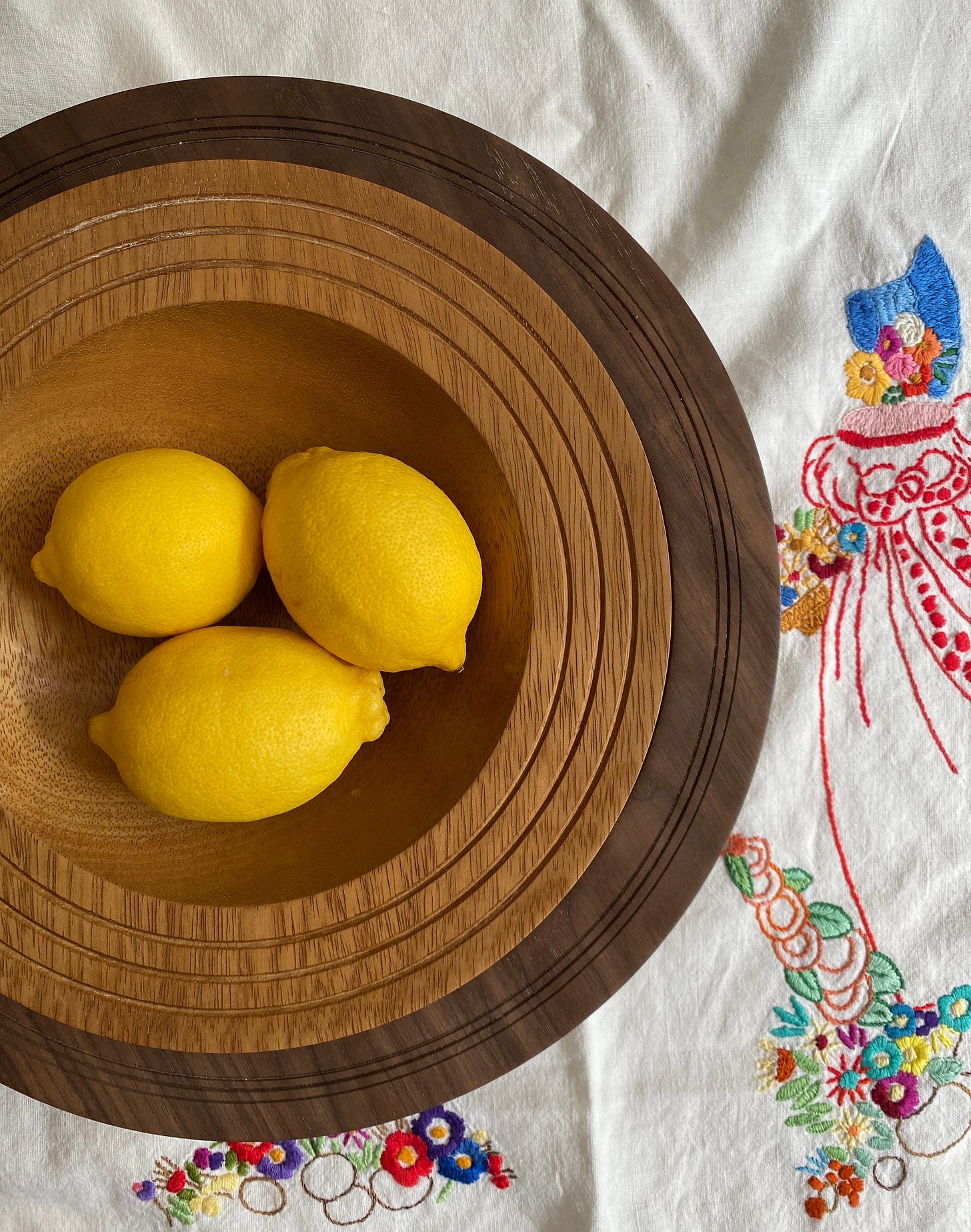

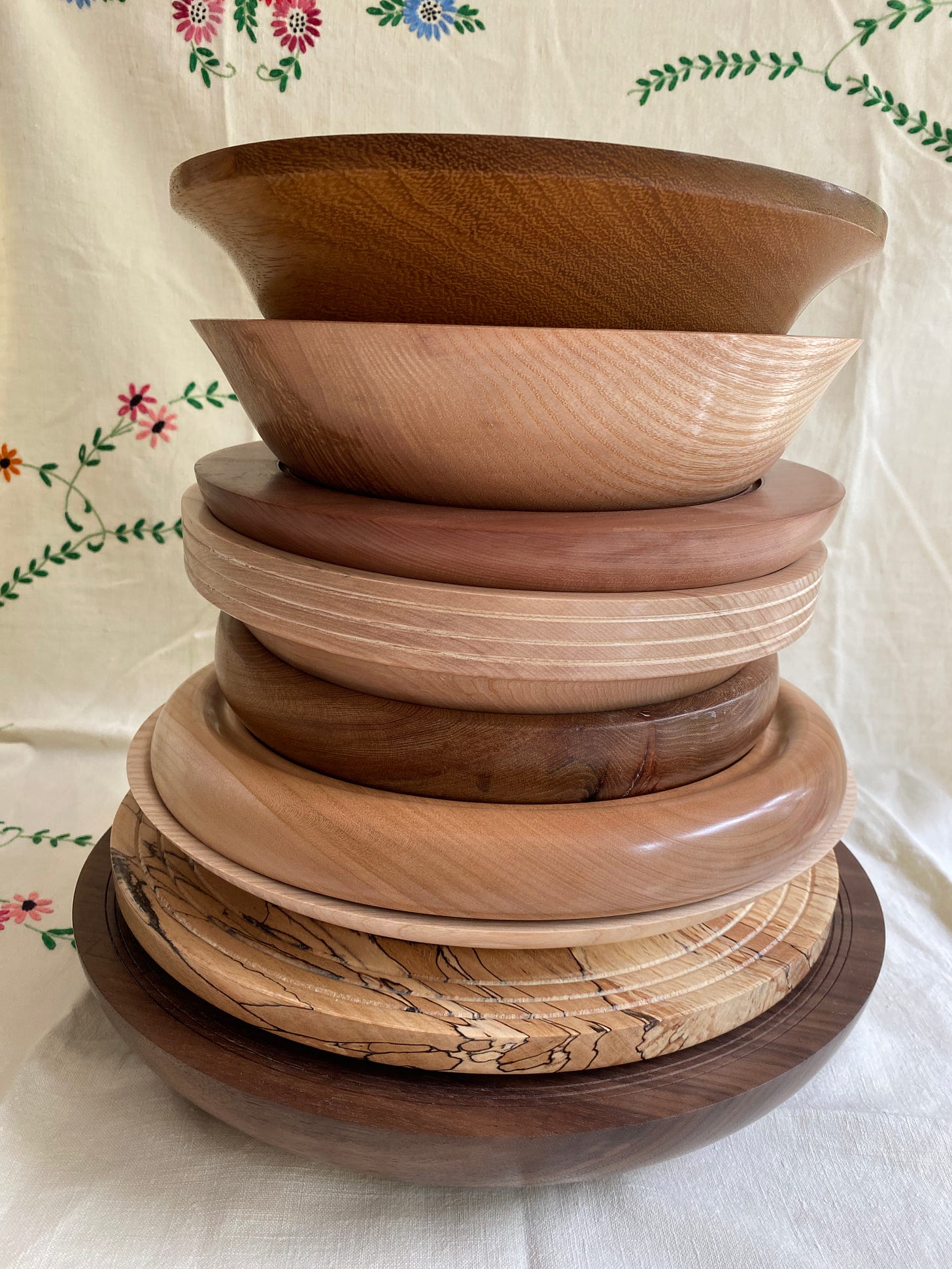
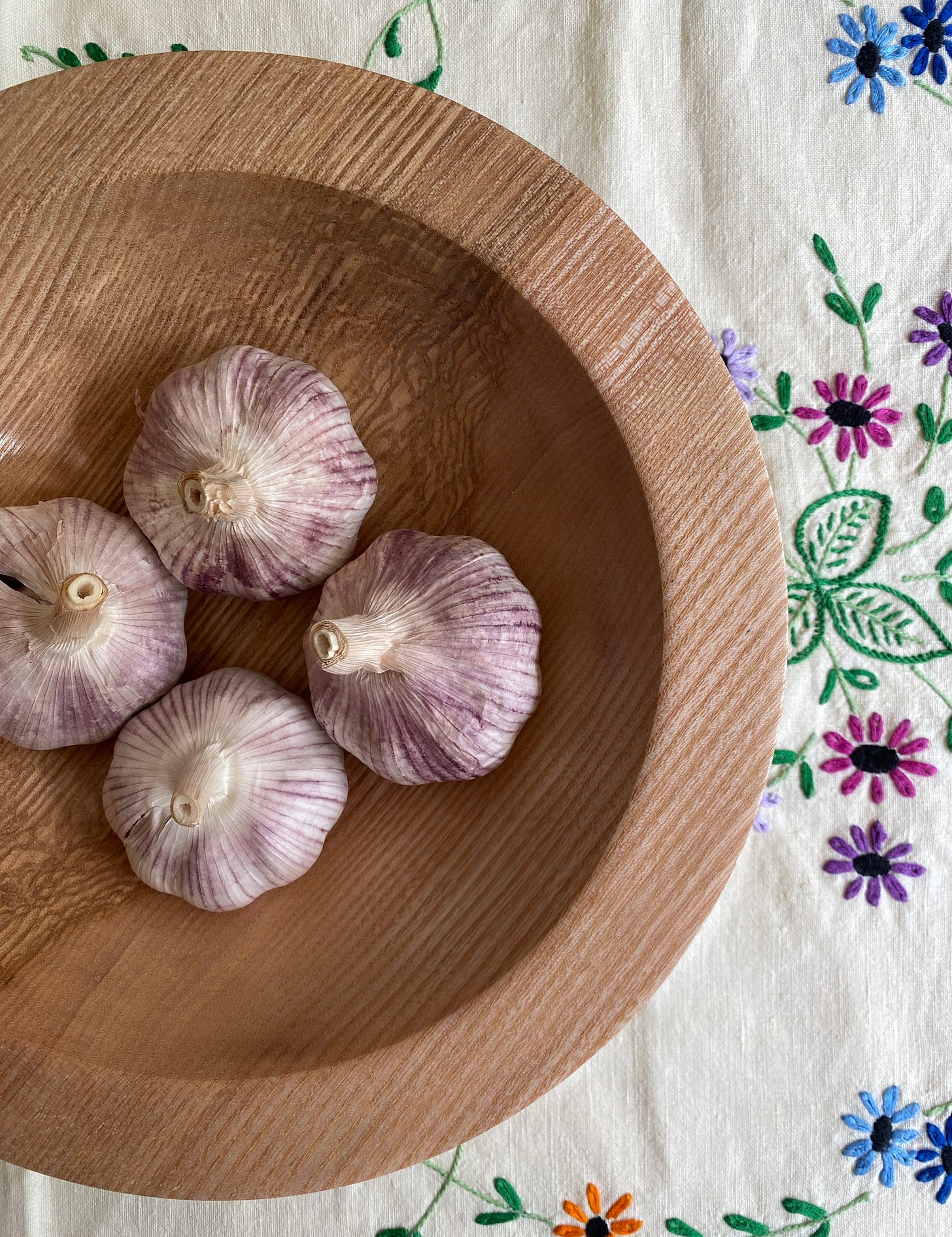
What a beautiful love letter to Simon x
I love the way you took the threads of the reviews then wove them together to write something of great substance both universal and intimate. It really resonated with me. Plus those bowls are beautiful.